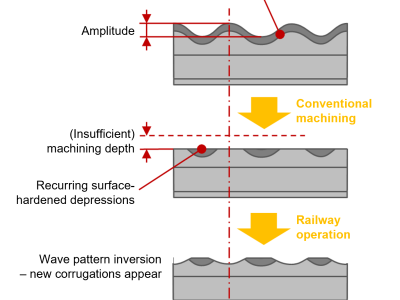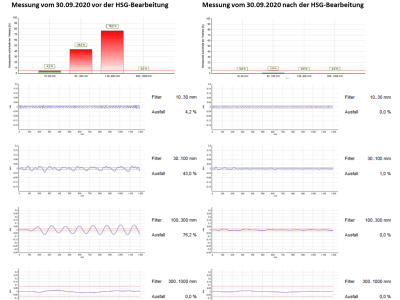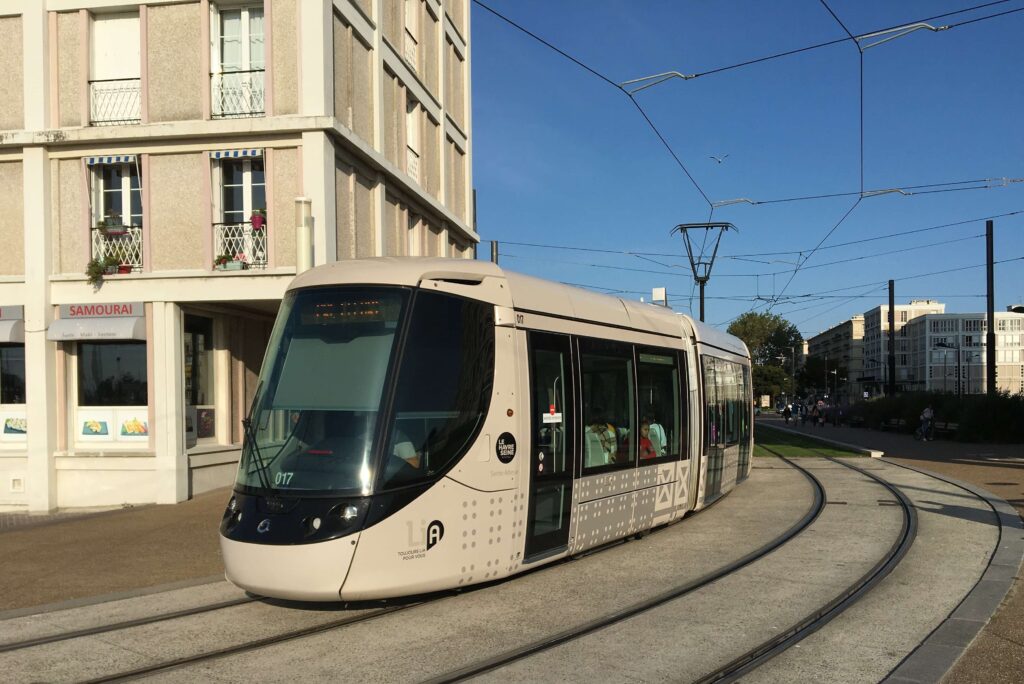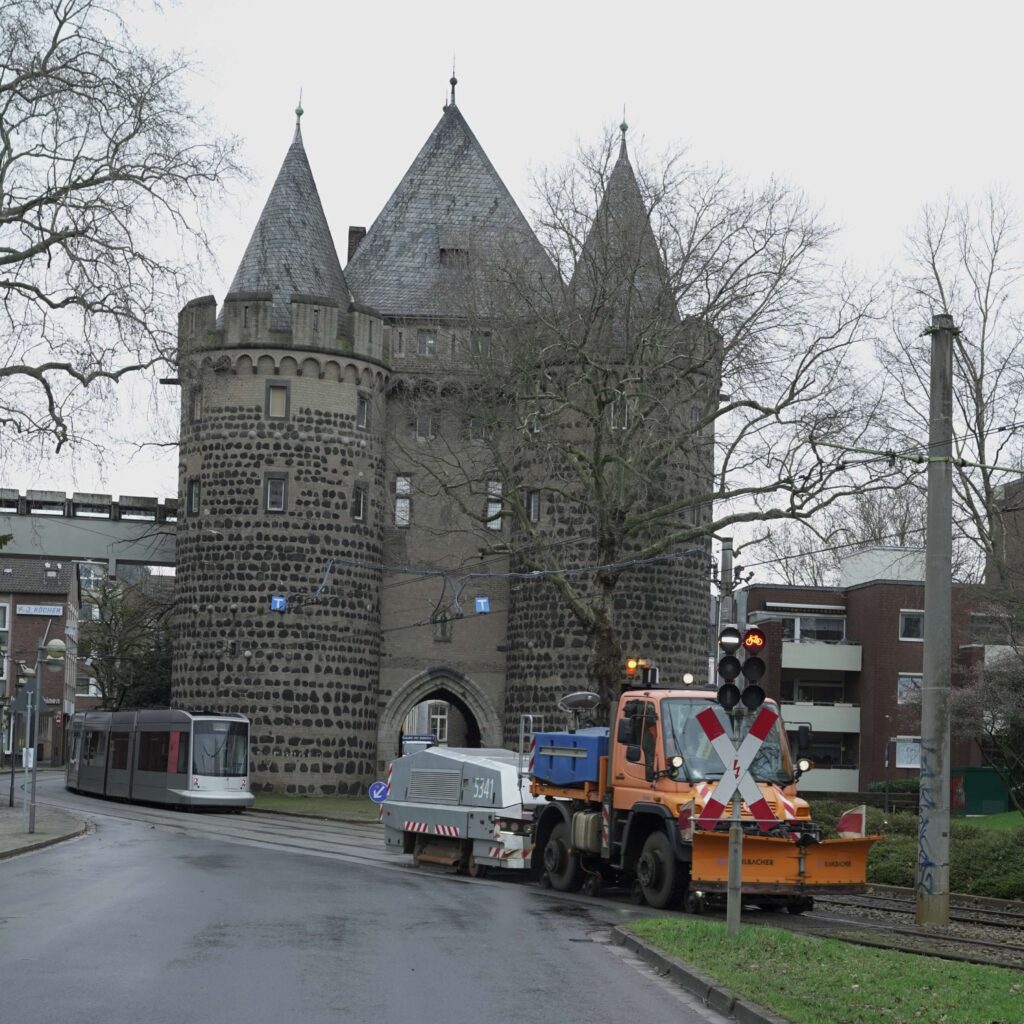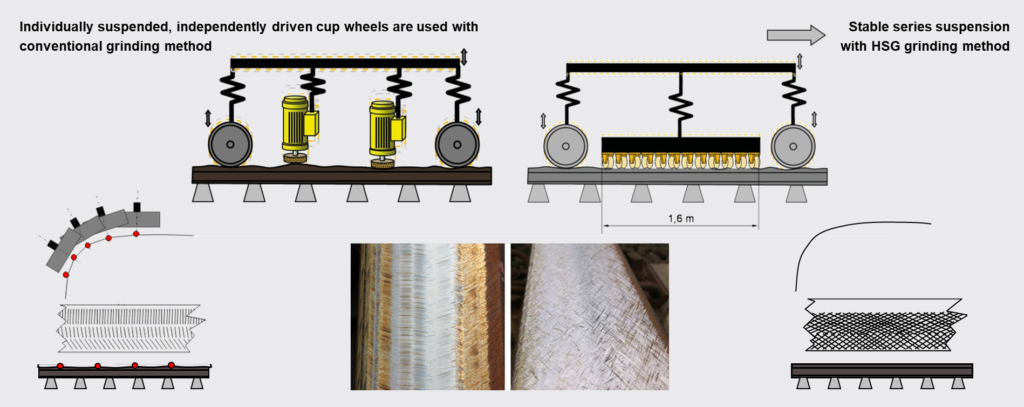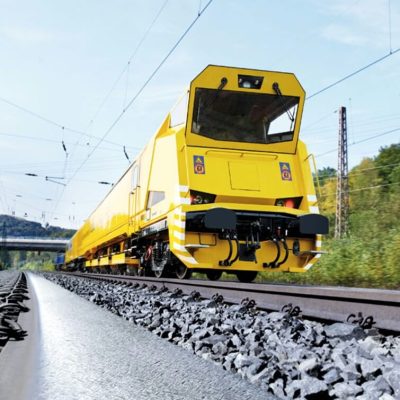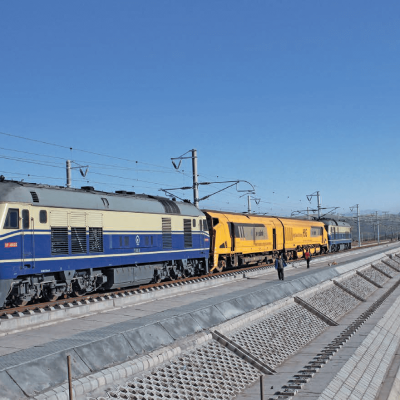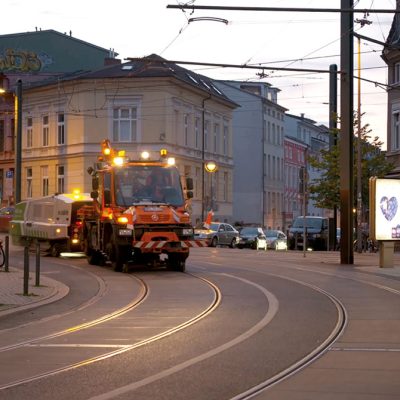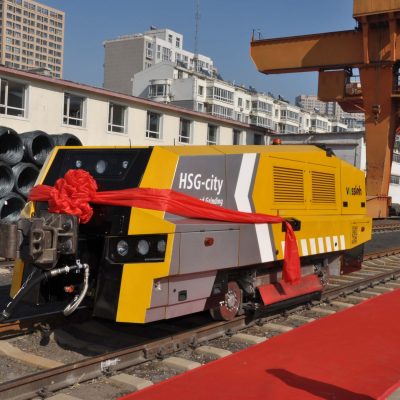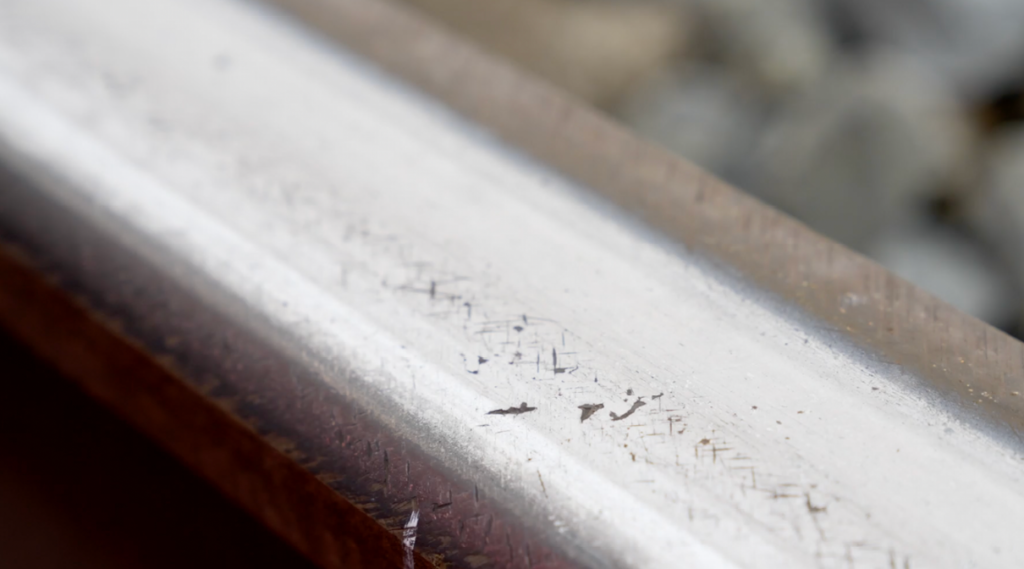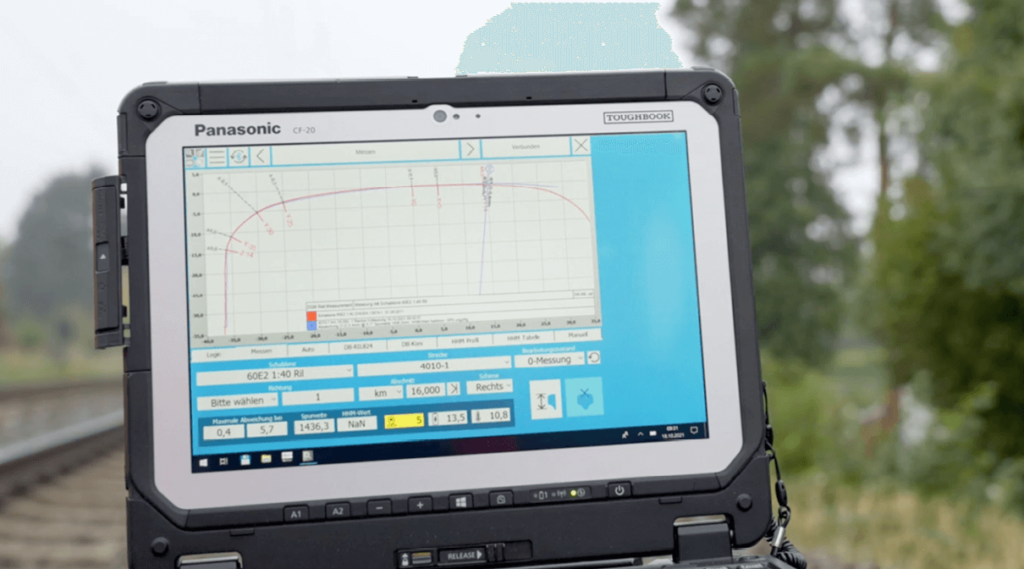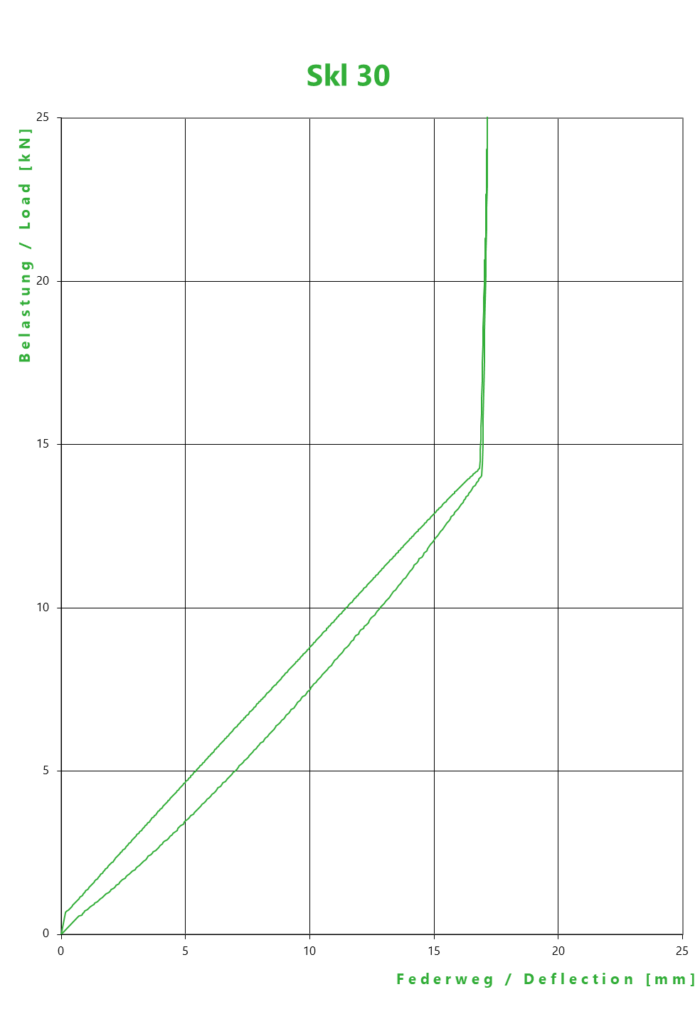Pioneer in preventive rail maintenance
- Mill-scale removal, head-check prevention and the removal of corrugations and greasy residues
- Effective alternative to the grinding procedures used on specially monitored track
- Switches with spring-action frogs without check rails can be machined as well
HSG-city hybrid
Zero-emissions HSG-city
Coupled to an electric traction vehicle, the three hybrid versions of the HSG-city carry out zero-emissions grinding on the Shenzhen Metro for the first time. A further advantage is that the combination only requires one operator. This enables either:
- a greater range,
- triple the output in just one pass, or
- a combination of rough and fine grinding wheels to perform the metal removal and the fine grinding in a single procedure.
In 2015, line 6 of the Beijing Metro became the first HSG-city project in China. Although the tracks had only been opened in December of 2014, heavy traffic had already caused severe corrugations to appear on the rails – particularly in curves with small radii. Rail defects, particularly slip waves, had formed, making it necessary to grind up to 0.36 mm off the rail surface.
The applications are numerous and range from removing mill scale from newly-laid rails to noise prevention and the removal of corrugations. We achieved a reduction in noise emissions of 4 db (A), for example, on the tram line in Guangzhou.
Effective corrugation removal
Corrugation-free longitudinal profile – guaranteed!
The transition can be made from partly corrective to fully preventive maintenance after only two or three grinding campaigns. The row of grinding wheels acts like a ruler.

Mit dem Laden des Videos akzeptieren Sie die Datenschutzerklärung von Vimeo.
Mehr erfahren
Customer-oriented & transparent procedure: Condition-based rail maintenance – Noise reduction as an indicator of quality
- Consideration of known hot-spots
- Fact-based integration of the infrastructure exposed to different rates of wear in the various track sections
- Passively driven grinding wheels and sturdy series suspension in the HSG-city ensure that there are no periodic grinding patterns or tonality, as required by the specifications in EN ISO 3095:2013.
- Measurements confirm qualitative improvements in the rail profile over the years
“The rediscovered passenger comfort is amazing! There’s a lot more grip and a lot less squealing in the curves.”
Except from an e-mail sent in by a tram passenger in Le Havre
„With the HSG-city, we‘ve found an adequate tool for noise-mitigating rail maintenance. Not only is this confirmed by the regular corrugation measurements, the significant reduction in the number of complaints from residents is unequivocal proof that the cyclical grinding campaigns are effective. What’s more, the compact grinding machine gives us the freedom to fully machine the expansive network twice a year and also carry out special deployments such as removing greasy residues.“
Peter Ahrens, Head of Track Systems at Rheinbahn AG in Düsseldorf
Functionality & USPs
How the HSG grinding process works
- The unique feature of this method specially for preventive grinding is the high grinding speed of up to 80 km/h, which makes it possible to grind in train mode inside the regular train timetable.
- HSG not only removes rail defects like head checks and corrugations, it also reliably prevents new defects from forming and thus extends the service life of rails by up to 100 %.
- Their angled orientation to the rail causes the peripheral grinding wheels to turn by themselves (passively driven)
- Due to the elelongated area of contact, the grinding wheels remove brittle surfaces (hardened surface layer) and the beginnings of corrugations and slip waves.
- The grinding intensity and output are determined by the speed of the traction vehicle and the grinding pressure.
- The aim is to remove 0.1 mm in three to ten passes.
- The existing rail profile is not altered because the grinding wheels take on the profile of the rails and not the other way around.
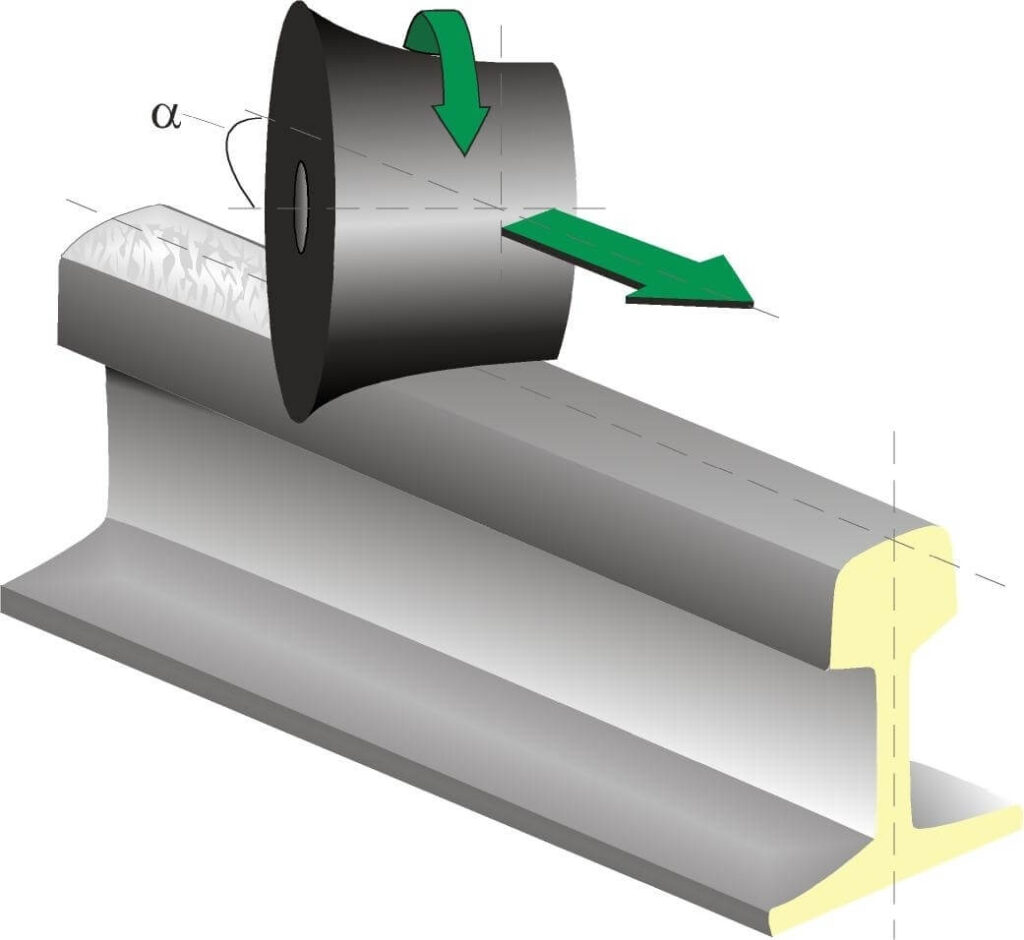

Mit dem Laden des Videos akzeptieren Sie die Datenschutzerklärung von Vimeo.
Mehr erfahren
Now in more than 10 countries (> 300,000 km of grinding work done)
- On almost all of DB’s main lines and on all the German high-speed lines
- Used on all PDLs in China for prevention, reprofiling and removing mill scale from newly-laid rails
- Officially recommended by the Chinese ministry for the maintenance of PDLs since 2019
- Since 2013, HSG-city has been used in numerous European and Asian cities and metropolises for removing corrugations and reducing noise.
Numerous applications
Application examples of HSG-city
- Removing the mill-scale that builds up during the manufacturing process considerably extends the rail‘s service life and forms the foundation for preventive rail maintenance
- Metal removal of 0.2 mm
- Lower surface roughness (Ra <6–10 µm) to prevent squat series
In purchasing an HSG-city, the tram network operator in the Finnish city of Tampere has gone with prevention right from the start. The network was opened for operations in the summer of 2021.
© Risto Eränen/Veho Oy Ab
A 4-db(A) reduction in the noise level was achieved in 13 passes at speeds of 18-20 km/h on a track section almost 8km long in Guangzhou.
- Fallen leaves in autumn leave a film of dirt that
- isolates e.g. switching equipment and thus interferes with switch activation,
- produces considerable noise emissions and
- lengthens the braking distance of the vehicles.
- Regular passes with the HSG-city safely removes the greasy residue and rules out potentially adverse effects.
- Improved traction thanks to the slightly roughened rail surface is a further plus.
Corrective removal of periodic indentations
Initial situation on the Deutsche Bahn line 4010 Mannheim – Frankfurt:
- Periodic indentations in the gauge corner zone
- Maximum removal depth of 0.4 mm
- As it was not possible to close the line, the rails had be machined at night
Solution: HSG-2
- Using 18 passes over 6 nights (20 passes in some places)
- Selective monitoring at a total of 5 test points on the tracks in both directions
Result:
- The amount of metal agreed on for removal was achieved.
- Indentations completely removed
- Rail roughness determined to be medium quality class 1
- The rail‘s existing transverse profile was retained to a very large extent.

Mit dem Laden des Videos akzeptieren Sie die Datenschutzerklärung von Vimeo.
Mehr erfahren
see Case Study
close Case Study
